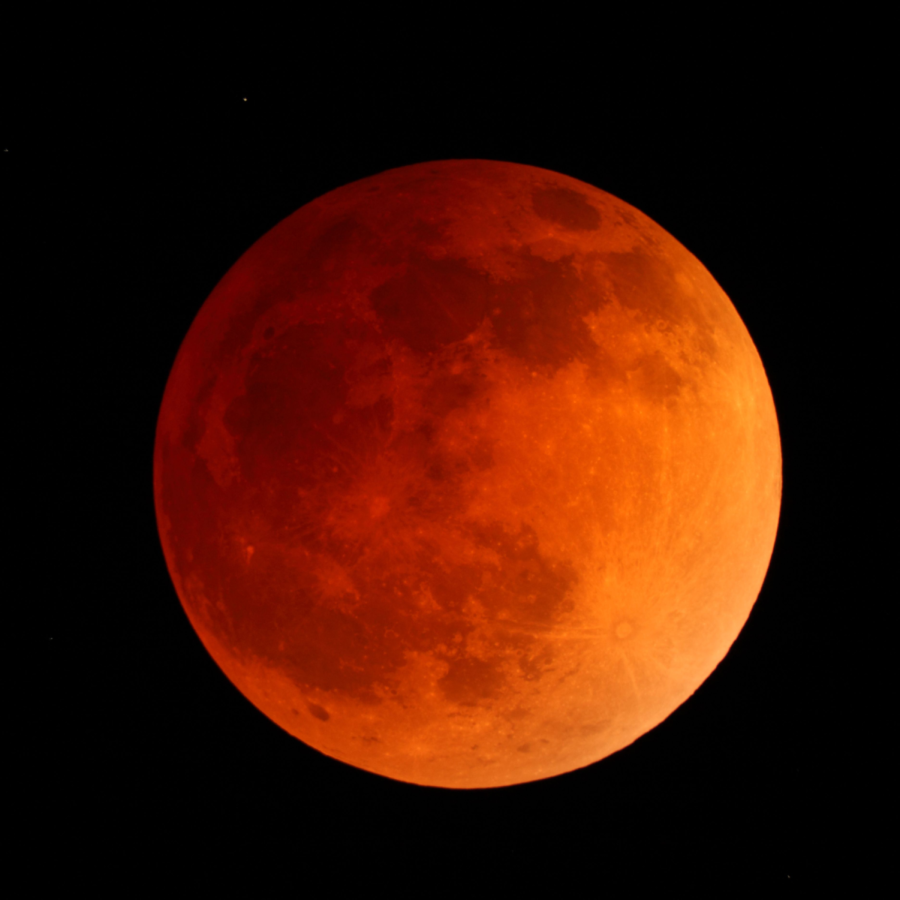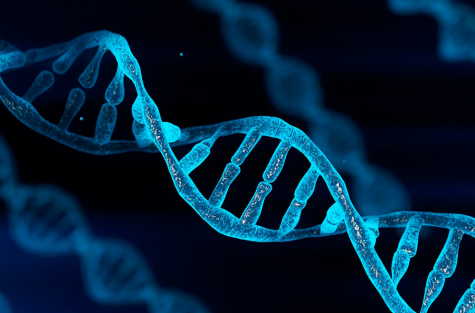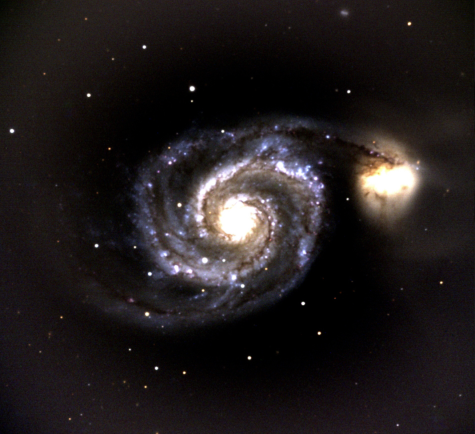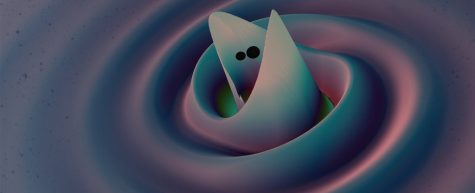Lunar Eclipse on May 15
May 6, 2022
For millennia, the blood moon was a concerning sight to many humans—a terrifying omen signaling dangers to come. Civilizations all around the world fabricated different myths and theories to explain this sanguine phenomenon. The Incans, for example, believed that it was the result of a jaguar attacking and eating the moon; in an attempt to scare away the frightening beast, they would shout and make as much noise as possible, even going so far as to beat their dogs to make them bark and howl.
Thanks to the discoveries of modern science, we now know that the blood moon is not a jaguar, nor an omen signaling the Last Judgment. Known as a lunar eclipse, this event is actually the result of the exact alignment of the Sun, Earth, and Moon. During a total lunar eclipse, the Moon moves into position completely behind the Earth and for a couple hours rests in the darkest part of its shadow—the umbra. Here, our beloved rocky satellite is eclipsed by the Earth, and completely shielded from the sun’s direct rays. This should, hypothetically, make the Moon completely dark. But there is another factor at play, which gives the lunar surface its characteristic vibrant, bloody look—the Earth’s atmosphere. As light from the sun travels through our protective atmosphere, it is scattered by random air molecules. Red light is more resistant to this scattering than other wavelengths, such as blue light. For this reason, the sky appears blue during the daytime—blue light is scattered more than other colors, and so more of this color reaches our eyes. This atmospheric scattering is also the reason why the sky appears reddish at sunset and sunrise. When the sun is on the horizon, its light must travel through more of the atmosphere before reaching our eyes; thus most of the blue light is scattered away, leaving predominantly red and orange wavelengths. The moon appears red during a lunar eclipse because of this scattering—although no light from the sun directly hits the moon, red wavelengths of light that have traveled through the Earth’s atmosphere are sometimes randomly reflected onto the Moon’s surface, producing its beautiful, mysterious color.
Lunar eclipses are awesome phenomena that produce stunning pictures. But, like the Great American Solar Eclipse of 2017, they are much cooler to see in person. Usually you would have to wait around a year and be located in the right place at the right time to see a total lunar eclipse, when the moon is entirely within the Earth’s umbra. Luckily, there is no need to go planning your next trip, nor will you have to stay up till 3 a.m to view one! A total lunar eclipse is coming to much of the Americas, including St. Louis, on Sunday, May 15. It so happens that this eclipse on May 15 is at the optimal time for viewing: the partial eclipse (when the Moon is not yet completely in the Earth’s umbra) will begin at 9:30 p.m, and the full eclipse will span from 10:30 p.m. to midnight.
The Astronomy Club will be hosting an event on this evening at Priory to view the total lunar eclipse together. We will have our new telescope as well as a few other telescopes so that all can view the eclipse not only with the naked eye but also under remarkable high magnification. The event will occur from around 9:45 to 11 p.m. on the Priory soccer field. All students, faculty, parents and friends are invited. There will be free pizza, graciously funded by the Student Council. I encourage all of you to show up for this rare event. Together, we can turn this eclipse into a great, educational, and fun way to end the school year for the Priory community. And rest assured—unlike the Incas, there will be no dog-beating involved!









